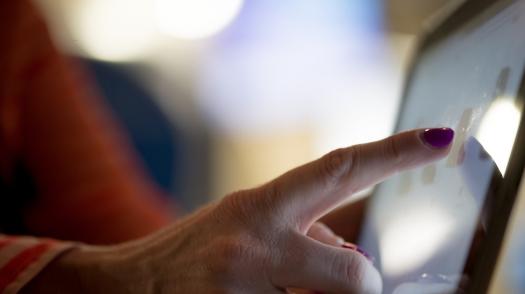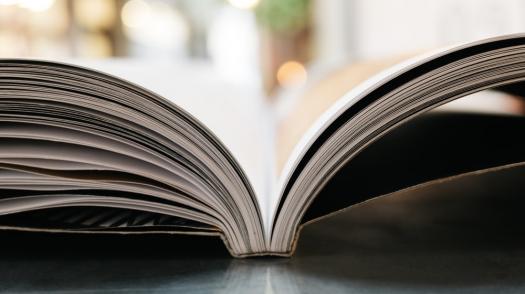Severe acquired brain injury affects a minority of children.1 This section is recommended only for families who know their child is in the ‘severe’ category.
Why talk about a brain injury as 'mild' 'moderate' or 'severe'?
What the clinicians are trying to determine is the outcome of the injury:
- How is a child likely to be affected by their acquired brain injury?
- What may their needs be in future?
- Will they be able to do the things they were able to do before?2
The truth is that the doctors themselves won’t have all the answers to these questions. But the aim in categorising an injury as ‘mild’, ‘moderate’ or ‘severe’ is to give everyone a rough idea of how a child might have been affected by their injury. It is only a very rough idea because these categories can’t accurately tell us what the ‘outcome’ will be.
We know that children with severe acquired brain injuries tend to have more complex difficulties.3 But the category of an injury only gives us clues about the future, and it is far from perfect.4 Some children with a ‘mild’ acquired brain injury experience great difficulties as a result of their injury.5, 6, 7 And some children with a ‘severe’ injury show better-than-expected improvements.
How do the healthcare professionals decide an injury is severe?8
The team around your child will look at a number of things to determine how severe a brain injury is. This can be quite a complicated process.
The most common assessment in cases of traumatic brain injury is the Glasgow Coma Scale. A word like ‘coma’ can be terrifying to any parent. But it’s important to bear in mind that this scale is really about trying to work out how awake and aware someone is.9, 10
For younger children, doctors use a version of this scale called the Paediatric Glasgow Coma Scale. But what does this scale actually involve in practice?
Clinicians will look at the way a child’s eyes move, how well they are able to speak (and if they’re able to), and the way their body responds. A ‘score’ is then worked out. This score will form part of the judgment about how severe the injury is.
The situation can be more complex in cases of non-traumatic injury. This is because there is such a wide range of causes of non-traumatic injury, that there isn’t a single scale or test that works for all.11
Nevertheless, the Glasgow Coma Scale may be used in working out the severity of a non-traumatic injury.
What other things will they look for?12
Doctors may also use the Abbreviated Injury Scale. This scale looks more closely at the nature of the injury, and where it is.
Another clue about the severity of the injury is if a child has been unconscious and for how long.
Clinicians may also look at how long a child has experienced post-traumatic amnesia. This is where the child is confused, disorientated and unable to remember new information.
This can be hard to judge in young children, because they may not be able to speak well enough to explain what they remember and what they don’t. Another factor used to judge severity might be how long a child has needed help with their breathing.
What this means in the long-term
We’ve looked at how an injury is categorised as ‘severe’. But even with the sophisticated tests above, it is very hard to judge how a child will be in the long-term. The truth is that nobody has all the answers. The sheer complexity of the brain means even the experts may not know what the outcome will be.13
Many children will be affected by their injury for the rest of their lives. It can be very difficult for parents whose children are unable to walk or talk as they look for signs of recovery.
But in all the uncertainty there is also great possibility. The experts may not be able to guarantee the level of recovery, but neither can they rule out the dramatic improvements many families have witnessed.14
It’s important to remember that research has suggested a supportive and positive family environment can help children in their recovery.
Rehabilitation
Children with severe acquired brain injury are likely to experience some form of rehabilitation. This may take place at a specialist centre or ward.
The aim of rehabilitation is to give children their very best chances at making improvements through different therapies or treatments. It aims to give children and young people as much independence as possible15, and to work on skills they may be struggling with.16
But let’s look in more detail about what rehabilitation hopes to achieve for children with severe acquired brain injury.
Helping children with their immediate difficulties
This will be about trying to manage pain. Healthcare professionals will use different ‘tools’ to establish what kind of pain a child is in and how that pain is best dealt with.
Children may also have trouble with reflux – this is when the ring of muscle that keeps the stomach contents down isn’t working properly.
And so acidic contents of the stomach are able to travel backwards into the gullet. It causes a burning sensation and pain. Children may also be struggling with sleep, so a rehabilitation programme might look at helping them with this.
Healthcare professionals may look at skin integrity. They will check that the skin isn’t breaking down or becoming infected from too much sitting or lying in one position. It may also be because of tightness or lack of movement at the joints.
Sometimes, a special mattress may be used to make sure pressure is distributed across the body. This is to prevent all of the pressure being on one place and causing damage to the skin.
The people around your child will also look carefully at nutrition (see below).
Nutrition17
Some children have trouble swallowing after an acquired brain injury. You may hear this described as dysphagia. It is important to manage dysphagia because there is a risk that food will go into the lungs, causing choking and infections (this is referred to as aspiration).
Dysphagia may occur because of an injury to the part of the brain that controls swallowing. Swallowing is a reflex – something we do without thinking – but an injury can prevent this from happening. Speech and language therapists may assess children in hospital and help them with swallowing.
Some children may have to be fed through a tube that runs through the nose and into the stomach (or also directly into the stomach). This can be difficult for children and their families. Some children with severe acquired brain injury may not get their swallowing reflex back. For others, it may take some time.18
Tracheostomy
A tracheostomy is a procedure where a surgeon creates an opening in the neck at the front of the windpipe (or trachea). A tube is inserted into the opening and connected to an oxygen supply to assist with breathing. Fluid that has built up in the throat and windpipe can also be removed through the opening.
Some children have a tracheostomy on a temporary basis. When it is removed, the opening heals, leaving a small scar. For some children, a tracheostomy may be permanent. Children and their families may need some time to adjust. This video looks at Living with a tracheostomy.
Postural management
Managing posture is all about the position a child is in. Professionals will try to find the best positions for everyday activities. It is also about preventing contractures.
This is when the muscles become tight because they’re not being used as much. Managing posture may involve different kinds of equipment. A standing frame gives people support in a standing position.
Specialist seating can help children to sit comfortably and in a position that not only prevents contractures but enables them to use their hands and eyes to maximum effect.
Splints are another kind of support that are fitted to parts of the body to prevent muscle contractures.
Orthotics is another way of supporting parts of the body. Braces are used to offer support.
Communication
Children with severe acquired brain injury may have great difficulty speaking and using language. They may have trouble understanding language.19 Some children with acquired brain injury may use alternative communication devices.
The type of communication system will depend on the individual child. Some systems use pointing, eye pointing or a signal to indicate the message the child wants to get across. Some of these systems are based on symbols or pictures and some on words.
There are systems which are run on computers, and these may have a voice output element. Some systems are lower tech and paper-based.
For some children with more severe injuries, a speech and language therapist may help them devise a system of cues to help them understand and anticipate what is about to happen.
Selecting the right system for each child takes time, and a decision is made only after looking into different aspects of a child’s needs.
Activities of daily living
Some children with severe acquired brain injury struggle with everyday things.20 This might be washing, dressing, using the toilet, drinking, or preparing food.
Occupational therapists (or OTs), working with the child, develop ways of helping them structure tasks like cleaning their teeth, or getting ready for school. It’s about building on the child’s ‘life skills’ and these therapists talk about enhancing someone’s participation in the world around them.
The impact on families
Brain injury can affect every part of family life. It should go without saying that parents may face a very tough time as they adjust to some of the changes we've talked about here. Read our section on looking after yourselves and our dedicated section on siblings.


